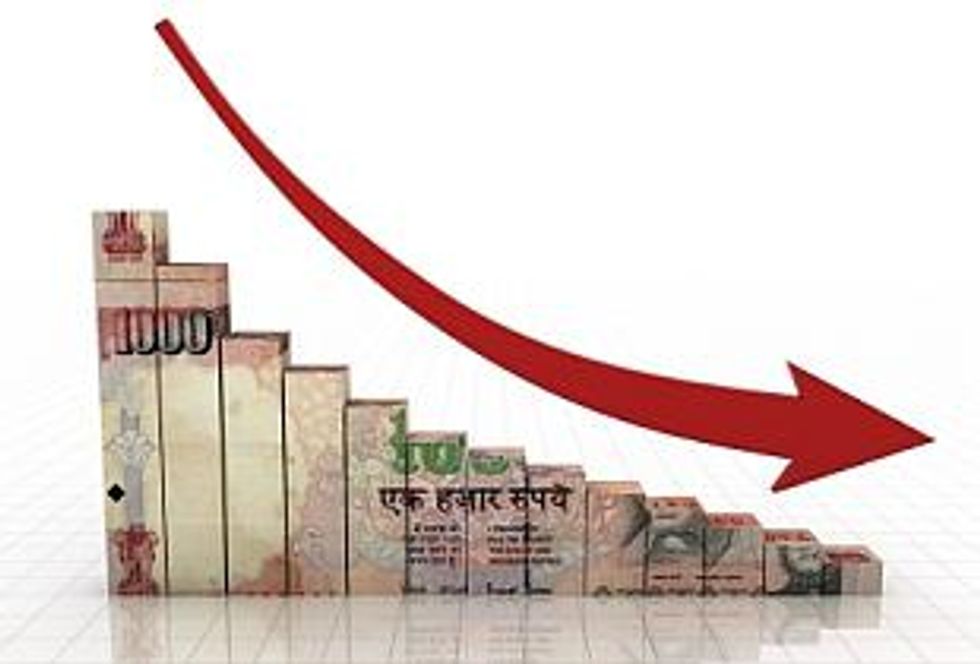Despite the recent drop in gold and silver prices in the international markets, prices for precious metals in India still remain at a premium and buyers are holding out for cheaper prices, stunting demand.
By Melissa Pistilli—Exclusive to Silver Investing News
The price of silver closed out 2011 at a nearly 50 percent retracement from the $50 high it hit in April. Silver has shown rather poor price performance the past several weeks during what has historically been a stellar time for the precious metal. In the past, between November and April, both silver and gold prices tended to track higher with small occasional corrections.The momentum that sent silver soaring to $50 an ounce earlier this year was fueled by rising investment demand around much of the world, especially in Asia. Whether or not we’ll see silver prices rallying in the next few months could largely depend on demand for physical imports of the white metal from this region, specifically China and India.
Economic growth in China is slowing and the housing market is witnessing sharp declines in nearly 70 percent of the nation’s cities, leaving less means for picking up gold and silver even at lower prices. Recent Chinese trade data shows silver imports down almost 30 percent in the year to November, according to a Reuters report which quotes Commerzbank as stating that November’s silver import total was “the lowest import volume since January 2009” while “at the same time, exports have climbed to a 12-month high of 170 tons, thus increasingly removing an important crutch from the price of silver.”
The approaching Chinese New Year should be price supportive for gold and silver as demand for bars and coins—traditional gifts—heats up.
But higher prices in India are proving price negative for silver as a weakening rupee—the US dollar has gained about 17 percent against the Indian currency since March of 2011—makes the metal much more expensive for Indian buyers and this has major implications for the silver market.
India is the world’s largest consumer and importer of the precious metal and the third largest industrial user behind the US and Japan. In 2008, silver investment demand from India posted a record total of 3,200 tonnes in 2008; however, silver imports to India for 2011 are expected to be slightly lower than last year’s total of 3,030 tonnes.
Despite the recent drop in gold and silver prices in the international markets, prices for precious metals in India still remain at a premium and buyers are holding out for cheaper prices, even during the lead up to the Indian wedding season, stunting demand.
India’s once surging economy is suffering under the weight of the financial crisis afflicting much of the western world, leading to the depreciation of the country’s currency as capital flows out of the Indian equities market. Analysts are pointing to the nation’s growing deficit, rising inflation and slowing economic growth as major factors in the loss of value in the rupee, the worst performing currency in Asia in 2011.
Asian News International reports that the rupee’s depreciation has placed a 10 to 20 percent premium on the price of imported precious metals and rough gems in some local markets, according to the Jaipur Jewellers’ Association. Higher prices have led to a marked decline in sales volume with some markets experiencing declines as high as 25 percent, despite the lead up to the Indian wedding season.
“Small traders, who trade in precious metals on a daily basis, generally remain absent if the market turns volatile. During the last few days, the price kept fluctuating in the range of 3-4 percent, thereby changing the quote between Rs 60,000 and Rs 70,000 a kg in rupee term. Hence, traders await either the markets to stabilise or indicate a signal with upward bias for fresh purchases,” said Mumbai bullion dealer Ketan Shroff of Pushpak Bullions.
Traders and jewelers aren’t expected to return to the market until prices fall back to Rs 50,000, “which is a benchmark in most cities here,” according to Sonamull Shan, another bullion trader in Mumbai.
The price of importing precious metals into India will continue to rise as long as the rupee keeps bleeding value, further dampening Indian appetite for gold and silver.
The likelihood that the rupee will continue to depreciate is high given the increasing vulnerability of the Indian economy—quite possibly facing its worst financial crisis in at least twenty years—and the ongoing crisis in the Eurozone, which has led to a significant decline in foreign direct investment in India over the past few years.
“In the short term, say, the next five to eight weeks, the rupee will remain volatile with negative bias,” according to Sanjeev Krishan, executive director at PricewaterhouseCoopers (PwC).
Further devaluation of the rupee will no doubt translate into increased prices for silver imports meaning demand from Indian buyers may continue to decline in the coming months. Does this spell trouble for the traditional seasonality of silver prices?
In the past—last year no exception—the price of silver has staged impressive rallies in February through April on the back of demand from India’s rural farmers, who make up the majority of the silver sales in the country.
Once India’s farmers harvest and sell their crops in the first months of the new year, they convert their cash into gold and silver bullion which they bury in their fields. Cultural beliefs in the rural areas lead farmers to invest their money almost entirely in precious metals rather than hold it in a bank account.
“Silver coins and bars have a very significant meaning to the rural community. We know of farmers who buy silver bricks in several kilos and lay them at a not-so prominent spot in their field, praying for a good harvest,” said bullion dealer Tanna Ghosal, Shivom Seth of Mineweb.
This preference for hording physical precious metals over holding cash in the bank may help to prop up demand and consequently dollar-denominated gold and silver prices in the first quarter of 2012, especially for silver which is viewed by rural farmers as an affordable alternative to gold.
Securities Disclosure: I, Melissa Pistilli, hold no direct interests in the companies mentioned in this article.






